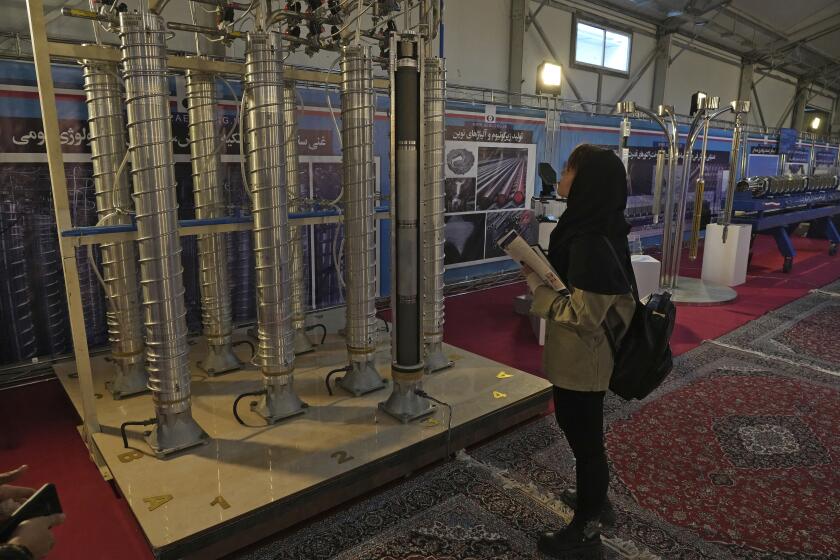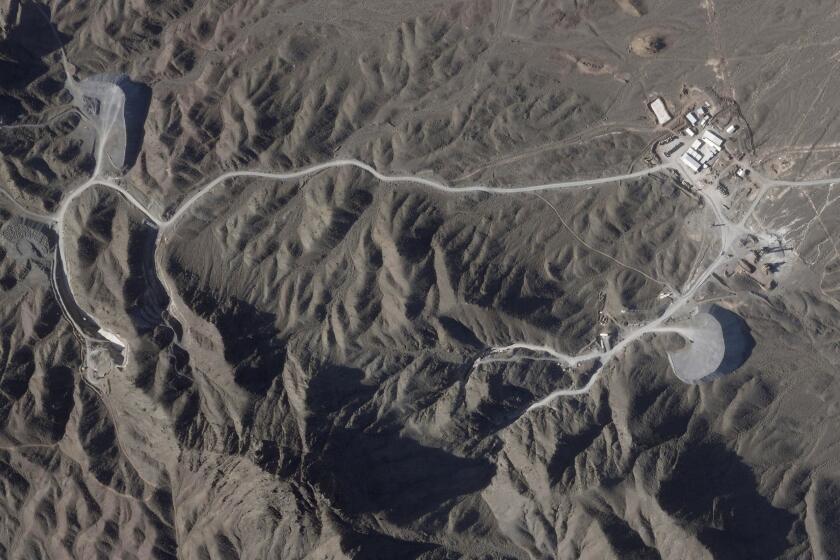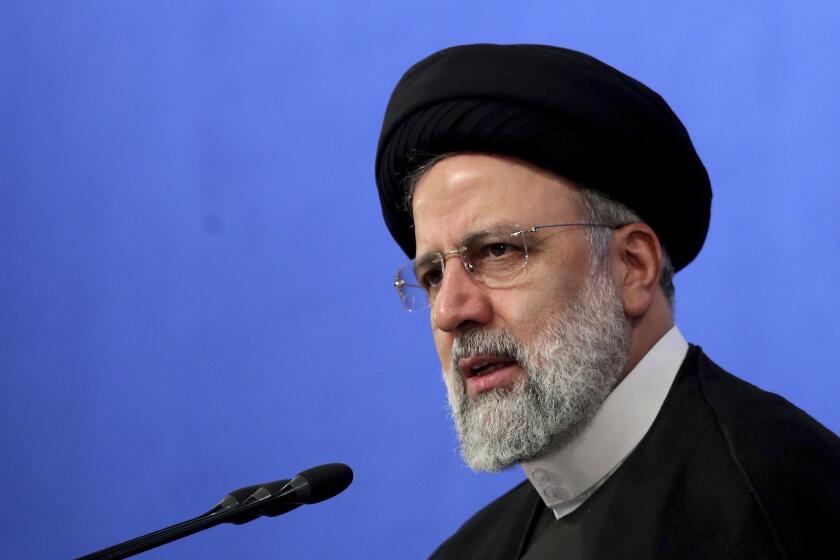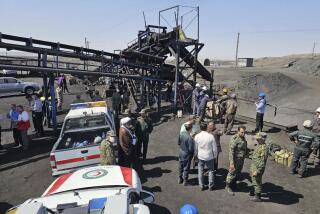Iran has further increased its stockpile of enriched uranium, U.N. agency says
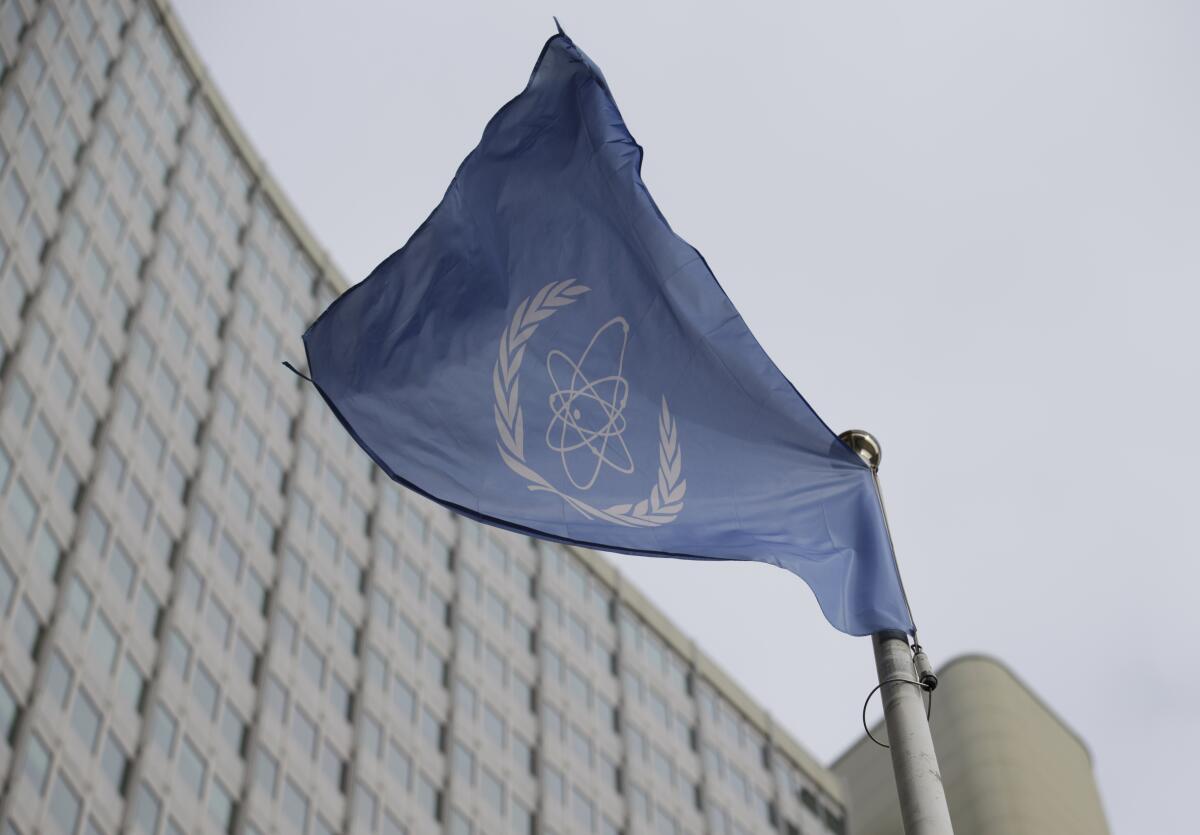
VIENNA — Iran has further increased its stockpile of uranium enriched to near weapons-grade levels in defiance of international demands, a confidential report by the United Nations’ nuclear watchdog said Thursday.
The report by the International Atomic Energy Agency, reviewed by the Associated Press, said that as of Aug. 17, Iran has 363.1 pounds of uranium enriched up to 60%. That’s an increase of 49.8 pounds since the IAEA’s last report in May.
Uranium enriched up to 60% purity is just a short, technical step away from weapons-grade levels of 90%. By IAEA’s definition, around 92.5 pounds of uranium enriched to 60% is the amount at which creating one atomic weapon is theoretically possible — if the material is enriched further to 90%.
The IAEA chief, Rafael Mariano Grossi, has previously warned that Tehran has enough uranium enriched to near-weapons-grade levels to make “several” nuclear bombs if it chose to do so. He has acknowledged the U.N. agency cannot guarantee that none of Iran’s centrifuges may have been peeled away for clandestine enrichment.
Inspectors from the United Nations nuclear watchdog agency have found uranium particles enriched up to 83.7% in Iran’s underground Fordo nuclear site.
Iran’s mission at the United Nations in New York did not respond to a request from the AP for comment. There were also no immediate comments from Tehran on the IAEA report.
Thursday’s damning report is the latest low in spiraling relations between Tehran and the IAEA.
Iran’s 2015 nuclear deal with world powers had put limits on its enrichment program — which the West fears could be used for making nuclear weapons and Tehran contends is only for peaceful purposes — while lifting punitive economic sanctions imposed on Iran.
But the deal collapsed after the Trump administration in 2018 pulled out of the agreement, leading Iran to abandon all limits the deal put on its program and enrich uranium to up to 60% purity.
Separately, surveillance cameras installed by the IAEA at Iranian nuclear facilities have been disrupted, while Iran has barred some of the Vienna-based agency’s most experienced inspectors. Iranian officials also have increasingly threatened that they could pursue atomic weapons.
The IAEA report further says that Tehran has not reconsidered its September 2023 decision to ban the agency’s inspectors from monitoring its nuclear program and that IAEA surveillance cameras remain disrupted. The IAEA said it had requested in an Aug. 8 letter that Iran provide access to the site in the city of Isfahan to enable the agency to service its cameras, but received no reply.
Additionally, the report says Iran has still not provided answers to the nuclear watchdog’s years-long investigation about the origin and current location of man-made uranium particles found at two locations that Tehran has failed to declare as potential nuclear sites, known as Varamin and Turquzabad.
In central Iran, workers are building a nuclear facility so deep in the earth that it is likely beyond the range of so-called ‘bunker buster’ bombs.
The IAEA report came just days after Iran’s supreme leader opened the door to renewed negotiations with the United States over his country’s rapidly advancing nuclear program, telling its civilian government there was “no harm” in engaging with the “enemy.”
Ayatollah Ali Khamenei’s remarks Tuesday set clear red lines for any talks taking place under the new government of reformist President Masoud Pezeshkian and reiterated his warnings that Washington was not to be trusted.
The IAEA said that as of Aug. 17, Iran’s overall stockpile of enriched uranium stood at 12,681 pounds.
“The continued production and accumulation of high enriched uranium by Iran, the only non-nuclear weapon state to do so, adds to the agency’s concern,” it concluded.
The report acknowledged that before the June elections in Iran, the IAEA was told “that further engagement with the agency would be determined by the new government of Iran.”
After Pezeshkian’s win, the IAEA congratulated him and offered to send the agency’s chief to Tehran “to re-launch the dialogue and cooperation between the agency and Iran,” the report said. But while the newly elected Iranian president confirmed “his agreement to meet” with the IAEA chief, no progress on such a meeting has been reported since.
Iran has slowed its enrichment of uranium at nearly weapons-grade levels, a confidential new report by the United Nations’ nuclear watchdog says.
The IAEA report is likely to add to the wider Middle East concerns, with tensions between Iran and Israel hitting a new high since Hamas’ Oct. 7 attack on Israel and the outbreak of the Israel-Hamas war in the Gaza Strip.
Tehran launched an unprecedented drone-and-missile attack on Israel in April after years of a shadow war between the two countries reached a climax with Israel’s apparent attack on an Iranian consular building in Syria that killed two Iranian generals and others. The assassination in Tehran of Hamas leader Ismail Haniyeh also prompted Iran to threaten to retaliate against Israel.
Liechtenstein writes for the Associated Press.
More to Read
Sign up for Essential California
The most important California stories and recommendations in your inbox every morning.
You may occasionally receive promotional content from the Los Angeles Times.
